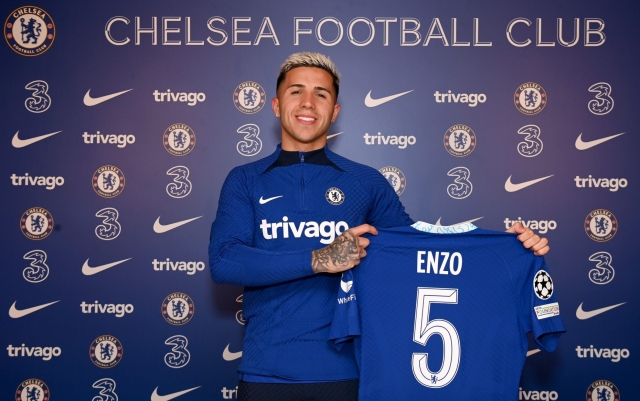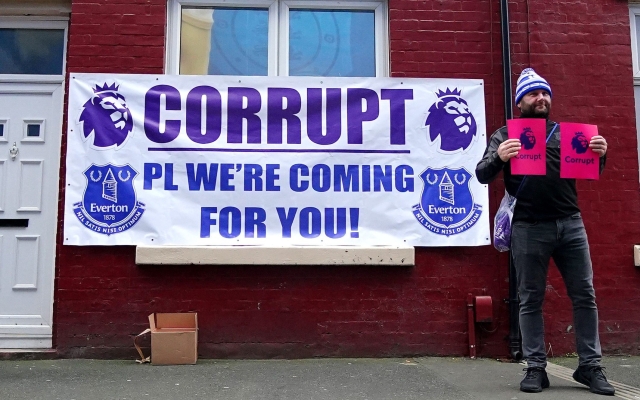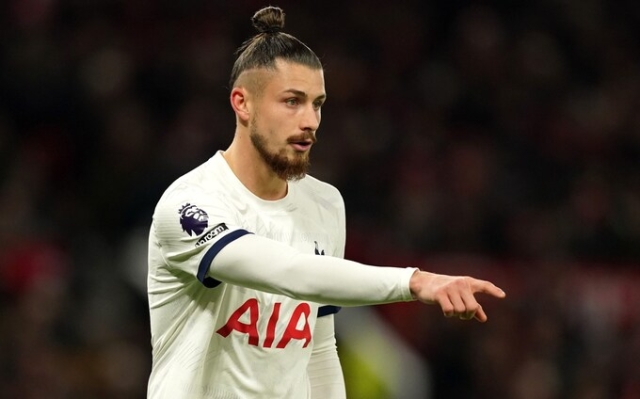Tottenham's purchase of Radu Dragusin has become the biggest deal in the Premier League in a very quiet January window. Photo: PA/Martin Rickett < p>January 2024 was the window when, finally, all the ropes holding back the Premier League's spending tightened and held, slowing a market that had grown to incredible proportions the year before. As the 11pm deadline approached, 20 clubs in the world's richest league had spent just £79m, the most on one Tottenham Hotspur deal for Romanian Radu Dragusin, a defender who isn't even expected to join their first team immediately .
It comes after the Premier League committed £850 million in January last year when a number of factors came together to make it by far the highest spend of its kind in history. This was almost double the pre-Covid 2018 high, the previous record of £430m. January 2023 was an exception, but January 2024 fell to levels not seen since Covid and before that a decade later. Football's penchant for spending is tempered by a number of factors.
 Chelsea spent £106 million on Enzo Fernandes at this time in the past year, which was a record January amount. Photo: Darren Walsh/Chelsea via Getty Images Unknown: How much will the new football deal cost?
Chelsea spent £106 million on Enzo Fernandes at this time in the past year, which was a record January amount. Photo: Darren Walsh/Chelsea via Getty Images Unknown: How much will the new football deal cost?
Financial fair play is usually top of the list, but the biggest uncertainty is exactly how much the increase will be in the new Premier League broadcast deal from the 2025-26 season onwards. The deals were struck in key territories, including the UK's most lucrative market, where tenders were held for the first time in six years since the post-Covid law was lifted.
The problem for the 20 clubs is that they still don't know how much the so-called Football New Deal will cost them. Demands for greater revenue sharing with the Football League, which began following the reorganization of the Super League, are supported by the government. Premier League rights income will rise again in 2025-26, compared with the current three-year cycle, by around £10 billion from domestic and international rights. Telegraph Sport reported that the Football League would have to pay up to £130 million per season. Until the New Deal is agreed upon, or perhaps implemented by an independent government regulator, clubs are unsure what their team spending budgets will be over the course of a player's five-year contract cycle.
Profits & sustainable development bites
Everton drop 10 points, epic battle with Manchester City over 115 Premier League charges; and now new allegations in favor of Everton and Nottingham Forest in the new monitoring period. The Premier League has taken FFP – or PSR (Profit and Sustainability Rules) as they are now called – seriously. Under the chairmanship of Alison Brittain, clubs have been following the PSR very closely, voting on new rules to speed up the reporting of these figures in the season. Many are sailing with the wind when it comes to allowing losses of £105 million for each three-year monitoring period. Now they know they can't afford to take risks. A preference for caution has hit transfer spending.
 Everton's 10-point deduction has reassured clubs that PSR rules will be followed as the league tries to stay ahead of the regulator's prospects Photo: Peter Byrne/PA Wire The Saudi Arabia Effect
Everton's 10-point deduction has reassured clubs that PSR rules will be followed as the league tries to stay ahead of the regulator's prospects Photo: Peter Byrne/PA Wire The Saudi Arabia Effect
The Saudi Pro League frenzy in January last year inflated the market to previously unseen levels. Suddenly the Premier League had a new trading partner and it couldn't be happier. It used to be unimaginable to collect fees for aging stars such as Liverpool's Fabinho or botch high-priced transfers such as Chelsea's Kalidou Koulibaly. Indeed, most clubs would be content to simply take the wages off the books. Suddenly they saw double the benefits. The Saudis pulled out of the market this year, with implications for budgets and PSRs. Will they ever return?
The stars are missing
Continental competitions in Africa and Asia have resulted in many clubs being unwilling to release players because they simply do not have enough players to cover them. This is important both in training and in matches. The squad is being fully deployed as the Premier League approaches its spring kick-off and the decisive phase of the season. Players who were once considered spares are now being told they may be needed.
 Key players' absences from the Asian Cup and African Cup of Nations have left clubs hesitant to sell. Photo: Zhizhao Wu/Getty Images Injuries and five substitutions
Key players' absences from the Asian Cup and African Cup of Nations have left clubs hesitant to sell. Photo: Zhizhao Wu/Getty Images Injuries and five substitutions
The same goes for the high number of injuries at some clubs. Newcastle and Tottenham in particular have seen large portions of their squads out of action for periods of the season. They can't risk losing players when there seems to be an injury epidemic that no one has figured out yet. Was it the final of the Winter World Championships last year? Is this the new trend towards 100-minute matches, with the added danger of extended VAR reviews meaning players catching colds and becoming more susceptible to muscle injuries? By having five reserve players, clubs can bring in more players. With their finances tight, this means they are more reluctant to sanction departures.
Cold in Europe
Spain's big two were once able to pick the best talent in the Premier League. Currently, Barcelona suffers from huge debts, and Real Madrid has significant loans. Both are pursuing financing deals to sell future revenue streams, and both are trying to build or renovate existing stadiums. Real Madrid signed Jude Bellingham in the summer, but otherwise their options were extremely limited. Barcelona spent €3 million on Oriol Romeu — a far cry from the days when they came to the Premier League for Cesc Fabregas, Luis Suarez and Philippe Coutinho. Across Europe there is a struggle to sell rights to domestic football. Many European clubs privately acknowledge that summer spending in the Premier League is one of the best opportunities to generate income.




















































Свежие комментарии